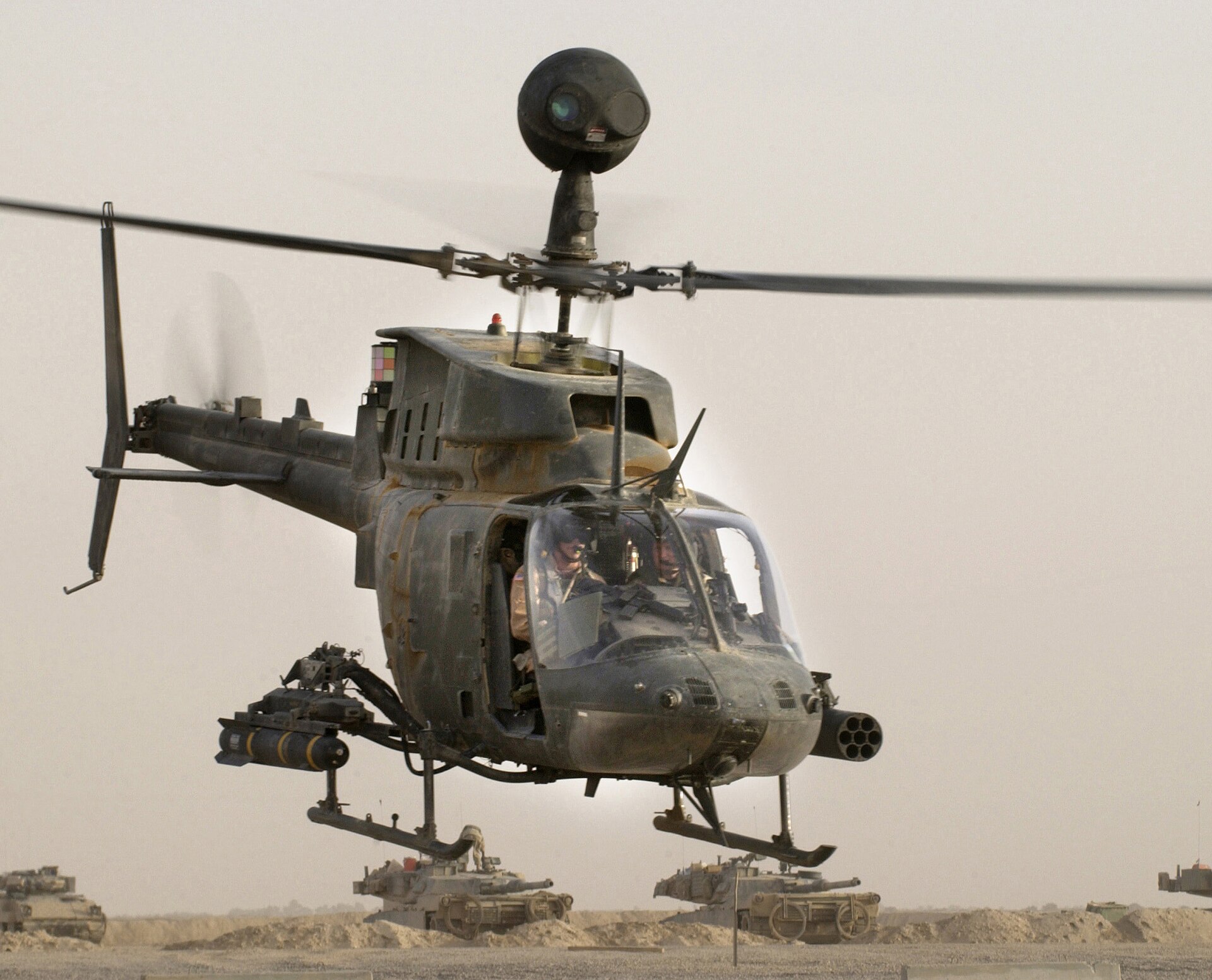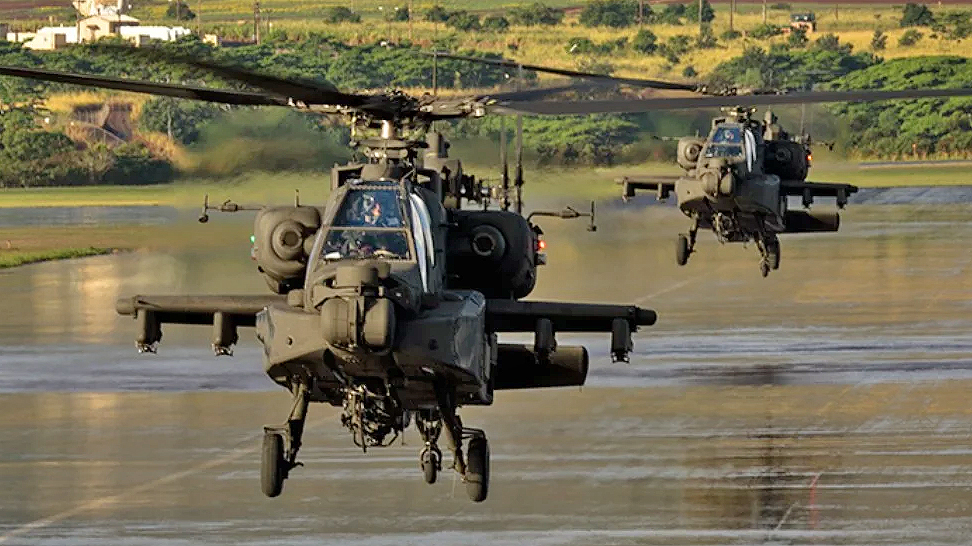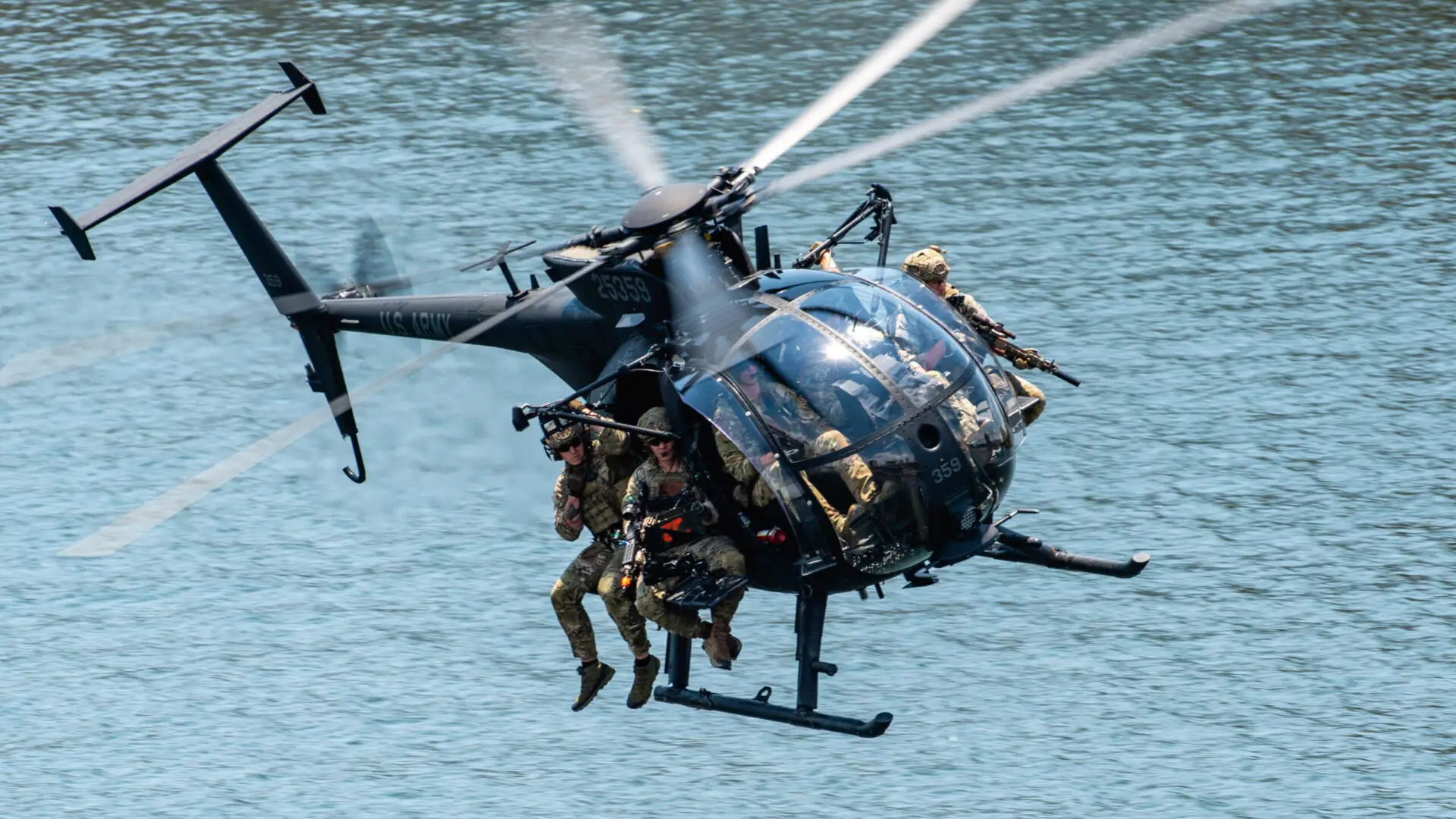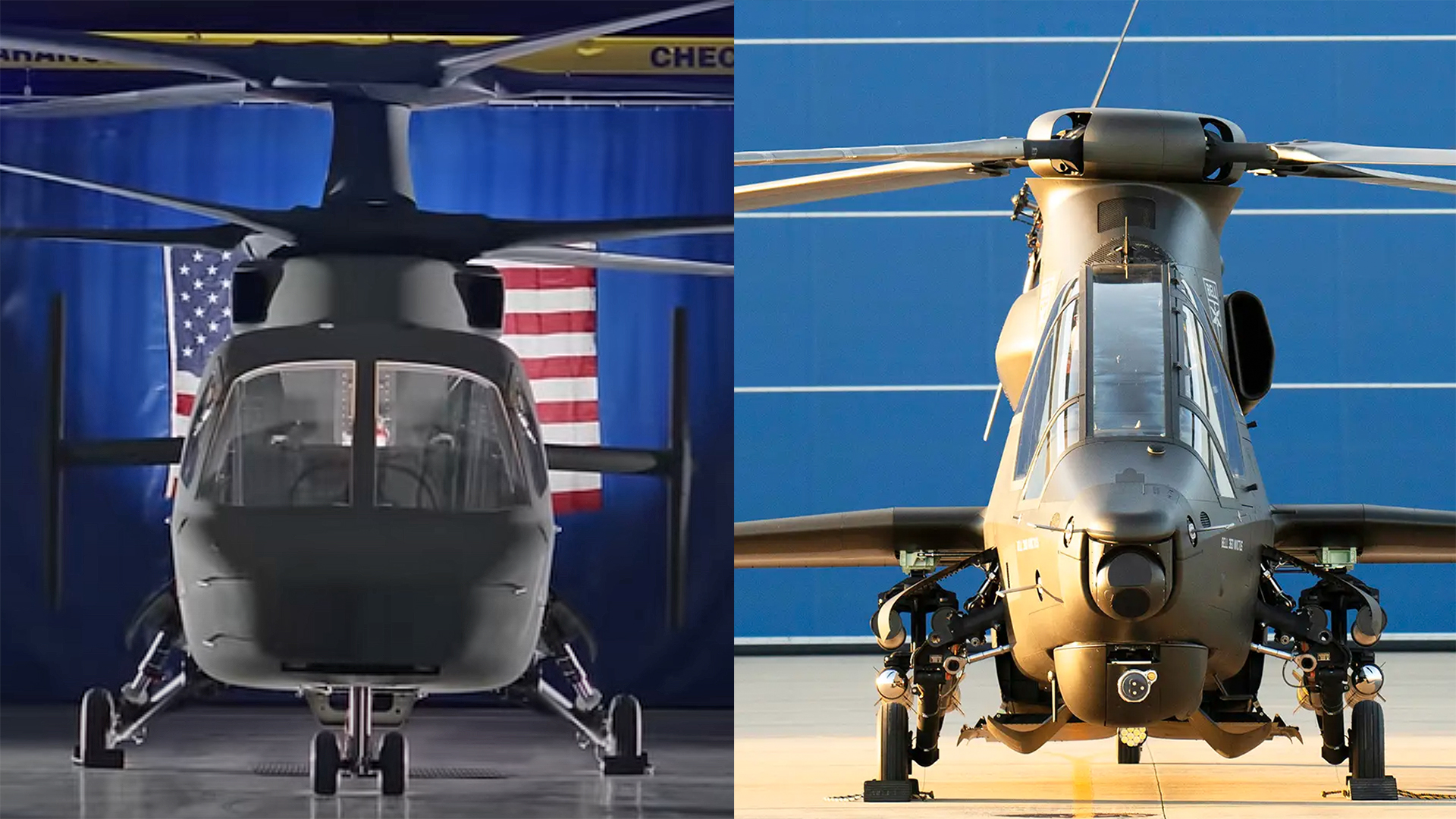The news that the U.S. Army is cancelling one of its highest profile aviation programs, the Future Attack Reconnaissance Aircraft (FARA), with two competing prototypes already constructed, was a shock to many, but it really shouldn’t have been. As the Pentagon is stacking its chips on the possibility of a high-end fight in the Pacific, and seeing the results of helicopter combat operations in Ukraine, the relevance of the FARA program had to be deeply questioned, and the assumptions of future aerial warfare it was based on needed serious re-examination too.
Simply put, moving forward would have been a wasteful endeavor, and cancelling it now, before it gets deep into flight testing, was the right call.
It is always hard writing a piece like this because you know both teams, Sikorsky with their Raider X and Bell With their 360 Invictus, worked immensely hard coming up with drastically different solutions to the same armed scout and attack helicopter problem. Both of the designs are promising and hopefully they will live on in one form or another, but more on that in a bit.


Still, no matter how great those offerings are, they have glaringly questionable utility on future battlefields, and the same can be said, at least to some degree, for the level of overall investment being made on the Army’s attack helicopter enterprise as a whole.
Change is very hard for the U.S. military, and understandably so. There are huge bureaucracies, with mounds of tradition, and highly entrenched platform communities. Then there is Congress and the avalanche of special interests involved with any procurement or force structure decision. Massive dollars are up for grabs that will be forked over for the service life of the platform, which is measured in decades. But the Pentagon is finally realizing that not changing, and doing so faster, is a bigger threat to national security than many looming external factors. Acting to cut major programs because they just don’t make sense amongst the rapidly changing tides of modern warfare is a good sign, not a bad one, that progress is being made in this regard.

Procuring hundreds of highly complex helicopters with relatively short-range capabilities — even those that are uniquely optimized for more range and speed than their predecessors — at great cost makes no sense when it comes to a fight in the Pacific. The opportunity cost of the dollars that would be spent on FARA instead of more relevant priorities and emerging technologies is just far too large for what the Army would be getting in return.
In a Pacific fight, for the vast majority of use cases, FARA, even with its enhanced range, will not be able to get from anything resembling a feasibly secure basing location to where they can have a major impact and survive to do so repeatedly. The most likely outcome is that these aircraft would have little to do during such a conflict, not because they are not highly capable, but because they simply can’t get to the areas where the fight is occurring and the odds of returning home alive would be questionable even if they could.

Ukraine has shown just how vulnerable helicopters are when operating on a modern battlefield — even one that is traditionally far better suited to their limitations than the Pacific. Operating among a layered air defense overlay massively degrades the utility of rotary-wings, and especially that of the attack and reconnaissance variety. Survivability realities and the need to get within engagement range of their targets is just increasingly out of sync for attack helicopters and many other platform options are far more suitable for executing standoff attacks.
Putting a human in the cockpit at all for such missions is also becoming more questionable with every passing day, especially when the Army is already sitting on a huge fleet of close to a thousand AH-64 Apaches, nearly half of which FARA was supposed to replace. The future is uncrewed, and especially for high-risk missions like FARA was intended to execute.

Yes, more speed enhances survivability. It means less exposure to threats, including traditional ground fire, with less reaction time for the enemy to effectively engage you. It would also decrease transit times to combat areas and make running from said threats more of an option. But adding 100 miles per-hour to the top-end speed of a helicopter (at best) does not equal some type of robust protection, especially when confronting a modern integrated air defense system (IADS). We are not talking about beating single threat systems one at a time here, it’s about being able to survive in areas where multiple disparate threats exist simultaneously, which are more likely than not working together cooperatively in real-time to see and kill you. Whether the target is moving at 150 or 250 miles per-hour, a surface-to-air missile won’t really care either way once you have been detected and tracked.

I have talked to numerous pilots from multiple military rotary-wing communities over the years about this and none saw the increased speed as a total game changer in terms of survivability. It is a great attribute to have in a cocktail of new survivability-related capabilities, and has good operational benefits, but at what cost and for what realistic real-world applications?
FARA was not just about speed, not in the least. It was about packaging new technologies along with speed to help accomplish the mission under tough circumstances.
Air launched effects (ALEs) — drones that can surveil, provide stand-in jamming and other electronic attacks, act as decoys, and provide longer-range loitering strike capabilities, including in a cooperative ‘swarming’ manner — would be among the biggest help in seeing any rotary-wing asset survives above the battlefield in a high-end fight. These drones, launched and controlled by FARA, were a big part of the survivability equation. Still, ALEs and the suite needed to control them can be installed onto any Army helicopter. The same can be said for electronic warfare systems, other advanced countermeasures, and enhanced sensors and communications that can provide greater situational awareness and thus survivability. These are all tenants of the FARA program, but they are platform agnostic, and FARA has no monopoly on them.

With more funds available from the cancellation of FARA, the Army can better equip the fleet it already has with similar systems and invest more heavily into much higher-end uncrewed capabilities for very high-risk mission sets that need to occur over great distances. The service can also really double down on crewed-uncrewed teaming, which will give the Apache, in particular, far more survivability and flexibility, as well as a much more effective reach. You can read more about this here.
Are there caveats to all this? Yes, I can think of many, but FARA is not a niche capability. It represents an investment into many hundreds (around 350 were predicted) of advanced and, especially in the case of the RaiderX, exotic aircraft, along with all the infrastructure required to operate them for decades.
We are talking huge dollars here over the program’s life cycle.
And if it’s hard to see how FARA would be relevant in many circumstances now, what will that look like when the aircraft is actually fielded, or even further down the line in 15 or 20 years?
The Army is still planning on pursuing the Future Long-Range Assault Aircraft (FLRAA), which is a medium-lift type based around the Bell’s V-280 Valor next-generation tilt-rotor. The Army said in its justification for cancelling FARA that it would continue to focus heavily on FLRAA. Bell’s design packs significantly greater speed, range (it can also be refueled in the air), and internal capacity than either FARA contestant and it can easily be adapted to perform armed reconnaissance and attack roles. In fact, that has always been envisioned.

Providing this capability for FLRAA alongside its standard utility mission set makes great sense as the airframes would be matched in performance so they can work together seamlessly. In other words, they will fly at similar speeds and possess similar endurance, so that they can mutually support each other without complicating operations. The mismatch between FARA and FLRAA in terms of performance was always puzzling, especially for the slower Bell offering. It also means support in austere forward areas will have one type to maintain, not two, when cooperative operations would take place.
Yes, an attack-configured FLRAA would give up some maneuverability and is larger in size than the FARA concepts, but just how relevant that is to the future ‘big army’ aviation fight is debatable. FLRAA is also faster than FARA, so those drawbacks would be offset to some degree. The cold hard truth is that none of it matters if you can’t even get to the combat area anyway. So now more focus, and potentially funding, can be put on FLRAA to get it right and to give it more capabilities and sooner.
With all that being said, both the 360 Invictus and the Raider X are promising aircraft, and for drastically different reasons. Bell’s more traditional design is less ambitious than Sikorsky’s, and thus appears to be aimed squarely at being lower risk. The Raider X has more potential to take on other roles and has significantly higher performance, but it truly is exotic by traditional helicopter standards.


Beyond their capabilities, the loss of FARA with no winner being crowned at all is different for each company. Bell also has an FLRAA contract that aims at replacing many H-60 Black Hawks and bringing in a new age of Army rotary-wing aviation. For Sikorsky, this is the second nail in the coffin for the company’s X2 compound-pusher, rigid-rotor technology that it hung so much of its future on. Sikorsky has many other programs, including the CH-53K King Stallion and, of course, the hugely lucrative, ever-evolving Black Hawk line, which the Army will continue to purchase for years to come. As for the longer-term future, the X2 concept winning FARA and FLRAA was key. Now what’s to come is less clear for the storied aircraft company.

The Lockheed Martin subsidiary’s SB>1 Defiant was a scaled-up iteration of the X2 technology and its subsequent S-97 Raider. That aircraft lost to the aforementioned Bell V-280 Valor, which seized the FLRAA contract. X2 technology is a major leap forward and it should be further explored. The Raider is relatively mature with its prototype having undergone flight tests for years now. So hopefully today’s decision will not be the end of the X2 journey.
U.S. Special Operations Command (SOCOM), in particular, had interest in both FARA contenders, and Raider, with its passenger cabin that can convert to a weapons bay, could be a great fit for replacing the 160 SOAR’s MH/AH-6 Little Birds. Foreign buyers could step in as well, especially if the Army’s special operations wing ends up developing it further.

X2 technology could have big uses beyond the military, especially for search and rescue operations, where every second counts. It could be argued that an aircraft like Raider would be the ultimate flying machine for VIPs, executives, and the mega-rich. It would be able to move personnel around entire regions far faster than a helicopter, while still being able to truly provide point-to-point connivance. A certified X2-derived helicopter may be a bit far-reaching, but it is certainly something to ponder.
The big question now is will Sikorsky continue to invest in the technology after these losses, especially if it turns out that no other military funding is on the horizon.
Bell’s 360 Invictus is a more traditionally configured light attack and reconnaissance helicopter with impressive targeted capabilities. It’s possible it could be developed further and be offered for sale internationally. As it sits now, it is less versatile by its basic design limitations than the Raider X. Still, SOCOM could also have interest in it for the Little Bird replacement. There is even a design concept for pop-out seating on its exterior to transport small numbers of special operators, like the MH-6s.
While both types are truly impressive and it would be fascinating to see them proceed to flight testing, the global threat picture continues to darken with each passing day, especially in regards to China. Pouring massive funds into the FARA concept just doesn’t make sense, especially when uncrewed capabilities are the future and could be used more freely in high-threat scenarios.
If anything else, the fact that the Army pulled the plug on FARA, while understandably a crushing move to many, is a sign that they are getting serious when it comes to coming to terms with what the future battlespace will actually look like, and not living wishfully in the past.
Contact the author: tyler@twz.com
